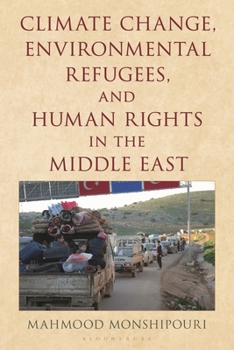Climate Change, Environmental Refugees, and Human Rights in the Middle East
The Middle East and North Africa (MENA) region has experienced more frequent droughts, heat waves, and other extreme weather events than the rest of the world. Flooding has forced human migration and displacement in Egypt, Iran, and Tunisia in 2020, while wildfires have spread in Lebanon, Syria, and Turkey. This in-depth and readable text introduces students to the current and historical impacts of climate change on the region. The author, a specialist in the MENA region, unpacks the implications of several developments that have triggered large-scale migration from rural to urban areas in the developing world, and Middle East, and North Africa, and threaten to destabilize the region. These include, among other things, widespread famine, population displacement, and the growing decline of agricultural productivity.
Digging deep into key terminology and frameworks such as the 1951 Refugee Convention, climate-human rights nexus, climate-related protest, environmental politics, green investment, and climate governance, the author demonstrates how human rights and climate change are inextricably intertwined and provides additional context to support student learning. This books examines the environmental threats and history of individual countries, including a broad and detailed survey of how the issues of climate change, forced migration, and human rights interface with socioeconomic, political, and legal perspectives.




